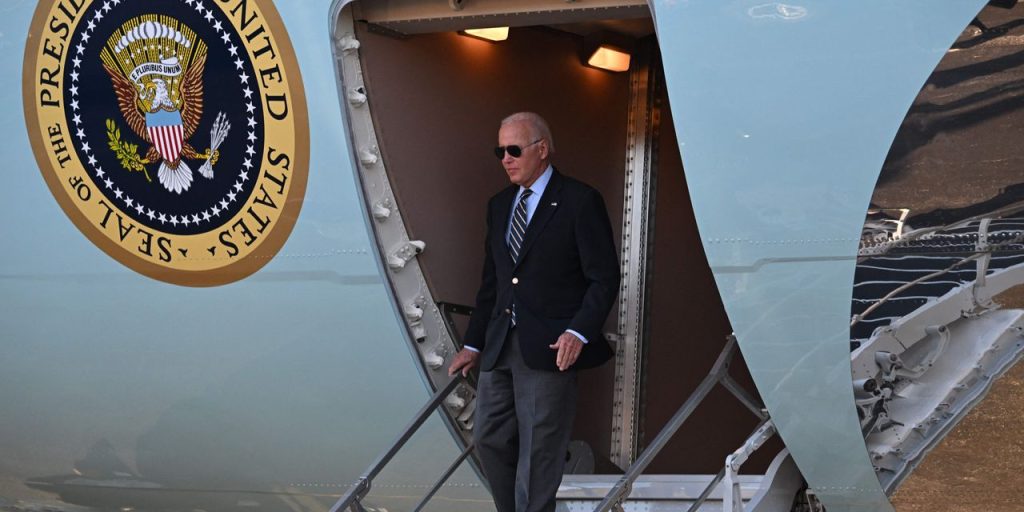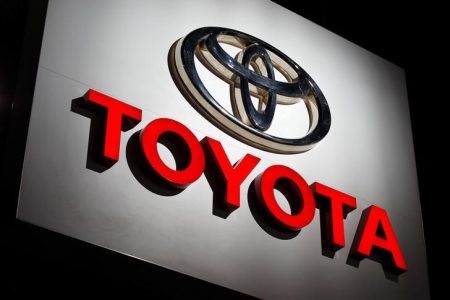If the majesty of the Arizona’s Grand Canyon isn’t enough to spark action on the environment, the region’s record-setting extreme heat and the viability of a key water source should move more Americans to take climate change seriously, and fast, President Joe Biden said Tuesday.
Biden is holding events in Arizona and New Mexico this week to promote his administration’s investments in climate, conservation and clean energy. He’s also aiming to raise awareness about the energy and climate incentives contained in his signature year-old spending bill, the Inflation Reduction Act, amid signs that the public doesn’t fully understand all it offers in the way of tax incentives and more.
While in the Southwest, Biden will also raise funds for his 2024 bid for a second term in the White House.
“There’s more work ahead to combat the existential threat of climate change,” he said to a group gathered while he signed the designation for a new national monument near the Grand Canyon.
Two major spending laws ushered in under Biden’s watch have featured climate-focused initiatives, including 2022’s IRA, which packed with tax incentives that are still being fine-tuned. Those incentives include, to name a few examples, tax help for manufacturing and purchases of electric vehicles
TSLA,
RIVN,
as well as energy-efficient heat pumps, which can replace fossil-fuel-burning furnaces and air conditioners for home heating and cooling. Biden also included climate-change initiatives in the earlier Bipartisan Infrastructure Law, which earmarked funding for EV charging and more.
A July like no other
The president’s visit to the region follows a record-breaking month for heat. More than 100 million Americans were routinely under heat warnings in July. In fact, the World Meteorological Organization declared July 2023 the hottest month on record. Extreme heat, linked in part to climate change, kills more Americans than floods, hurricanes and tornadoes combined.
Even regular hot spots like Phoenix, Ariz., and parts of Texas suffered under an unusually unrelenting string of days when the mercury remained well above 100 degrees Fahrenheit. “Real-feel” factors such as humidity made conditions even more brutal, and nights did not cool enough to bring relief. Phoenix, where some residents received third-degree burns from pavement, was the first major city in the U.S. to average 100 degrees for an entire month.
Biden is working to highlight the IRA, which many Americans remain confused about. Most Americans — 57% — disapprove of Biden’s handling of climate change, according to a just-released Washington Post-University of Maryland poll. The poll also found that few adults say they know a good amount or a great deal about the IRA, a law that includes new investments in response to global warming but whose name was designed to highlight the fight against inflation, not climate change.
Global warming is a natural phenomenon, and some of this summer’s warming was boosted by El Niño, the recurring weather pattern whose latest effects, scientists say, are only beginning. Still, it’s the speed of warming in the last several decades, boosted by manmade burning of fossil fuels like coal, oil
CL00,
and natural gas
NG00,
that alarms scientists and policy makers.
On the ground in Arizona, Biden’s team said the president’s economic agenda has steered more than $100 billion in private-sector investments in domestic clean-energy manufacturing, often through tax incentives and grants. The White House says such investments mean that domestic solar capacity
TAN,
for instance, is on track to increase five times by next year. Biden this summer also took steps to enhance federal protection of outdoor workers affected by extreme heat.
Biden has made climate change a key feature of his first four years, but he also raised the ire of environmental groups when he allowed select Alaskan oil drilling to proceed.
The IRA and the infrastructure law, outside observers say, mark the largest public investments in climate, clean energy and environmental justice in the U.S. to date. And they’ve sparked a renewed effort among mostly Republicans and the fossil-fuel industries to make sure U.S.-sourced oil and gas still feature in future energy plans. Project 2025, a conservative battle plan for the next Republican president, focuses less on anti-pollution efforts.
Read: Pence qualifies for first Republican debate: Here’s who else will be on stage.
In Arizona alone, the IRA has spurred over $8.3 billion in private investments in the state, plus 12,720 clean-energy jobs. This includes $1.2 billion in investments by the Tuscon-area American Battery Factory and a recently announced $5.6 billion battery facility in Queen Creek, Ariz., by LG Energy
373220,
according to policy group Climate Power.
National treasure
Biden is on site in the Southwest U.S. to designate a new national monument that will preserve 1,562 square miles just outside Grand Canyon National Park. It will be this president’s fifth monument designation.
Related: Biden just made a move to protect 900-year-old Joshua trees and a pristine coral reef
“There’s no national treasure, none grander, than the Grand Canyon,” Biden said Tuesday. His action is part of a U.S. antiquities act that grants such power to the president.
White House officials said the designation, meant to preserve public lands and sacred tribal lands, is also intended to help protect the Colorado River basin, a source of water for major population centers including Phoenix. It provides 40 million people with water and supports 5.5 million acres of agricultural lands. The designation comes at a time when the 23 years from 2000 to 2022 represent the driest period in 1,300 years in the U.S. West.
The Interior Department, reacting to concerns over the risk of contaminated water, enacted a 20-year moratorium on the filing of new mining claims around Grand Canyon National Park in 2012.
Existing mining claims, however, will not be affected by the monument designation, senior Biden administration officials said. The monument site encompasses around 1.3% of the nation’s known and understood uranium reserves. Administration officials argue there are significant resources in other parts of the country that will remain accessible.
In all, Biden has pledged to preserve 30% of the nation’s lands and waters from commercial use by 2030.
Read the full article here














